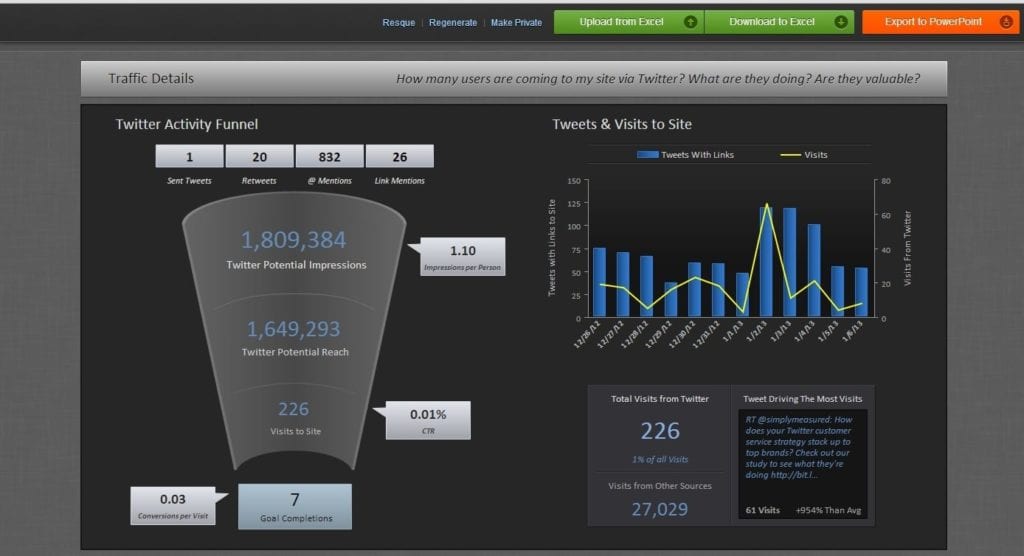
With CES 2020 beginning today in Las Vegas, many communicators start the year thinking about technology. Thoughts range from devices and tools that promise to make their jobs a bit easier to technology that will allow PR pros to create better experiences for target audiences.
In addition, PR pros think about tech-laden devices that will be thrust onto the market, requiring communicators to educate the public about their value, and, in some cases, explain away fears. PR pros also are concerned, and in some cases worried, with how technology could change or eliminate their jobs.
CES: More Than a Gadget Show
While CES began as a consumer technology show, it’s developed into something much grander. In many ways it sets the world’s tech agenda, at least during January.
While presidential advisor Ivanka Trump’s scheduled appearance today during a CES keynote session about the future of work should generate plenty of coverage, tech-laden gadgets promise to generate many of the show’s headlines,
Many of those gadgets will be relevant to communicators. The question, though, is how much more capable the communications devices on display at CES will be than what’s available today, says Dan Brown, senior PR director at Walker Sands. The leaps and bounds we’ve seen in mobile phones, for instance, “aren’t as great from one generation to the next as they used to be,” he says.
5G is Here, Finally
On the other hand, Brown anticipates 2020 will bring technological leaps. And several technologies and trends will matter to communicators.
For example, he says, 2020 will be remembered as a time when 5G, the wireless technology, “will actually be in the world” in a significant way. After years of people talking about the promise of 5G, devices relying on the technology will be omnipresent at CES, he predicts.
As Brown speaks to us from Chicago, one of the cities with the country’s largest concentration of 5G coverage, he says “just a handful” of PR pros around him are carrying 5G phones. By year’s end, he believes, about 50 percent of them will have 5G mobiles.
Still, he cautions, that it’s not clear, at least now, how much of the work communicators do this year will make use of devices with 5G technology. The point is that the technology is growing and gaining acceptance.
Delivery Vehicle, Voice Tech, Voice Search
That said, one way 5G technology is important to communicators is that it’s a great facilitator. For example, 5G will enable PR pros to deliver multimedia content, including video, much easier and faster to share with target audiences, Brown says.
In addition, he anticipates growth in voice technologies this year, which will influence communicators’ work. Shipments worldwide of smart speakers were expected to nearly double from 2018 to 2019, growing from 114 million units to 206 million, according to SAR Insight.
People with Google Home and Amazon Echosmart speakers “are listening to podcasts on them...and their capabilities are growing, all of which make them another great delivery mechanism for communicators’ messages,” he says.

Co-founder/CEO
Upgrow
Speaking of voice (no pun intended), voice search is expected to have a breakout year. ComScore predicts that 50 percent of online searches will be performed with voice search this year, says Ryder Meehan, co-founder/CEO at Upgrow. In addition, about 30 percent of all searches will be done without a screen in 2020, research firm Gartner says.
“These are bold predictions,” Meehan says, “and there is no doubt the shift toward voice search is a game-changer.”
For Meehan, the way SEO creates more instant-answer content and the importance of earning the #1 rank, which is read to the user, will be “an exciting opportunity.”
Red Lorry Yellow Lorry N. America director Meredith L. Eaton agrees. With more and more people using smart speakers and virtual assistants to find information via voice, PR pros must optimize content to rank for voice search, she says. Incorporating voice technology into their strategies could occupy a large part of communicators’ time this year, Eaton adds.
Silos Coming Down

N. America Director
Red Lorry Yellow Lorry L Eaton
Technology also will influence communicators’ roles. In 2020, tech will continue to assist in tearing down departmental silos at some organizations, analysts say. This will require marketing and communications to merge in streamlined collaboration to better facilitate their multi-channel outreach effort.
The way Entertainment Software Association SVP, communications & public affairs, Andrew Bowins sees it, cloud technology and automation will continue to play a greater role in facilitating collaboration between marketing and communications this year. This willl further blur the lines between experiential marketing and experiential communications, facilitating more seamlessly synchronized “wow” moments for audiences.
He sees communications technologies creating a digital workspace that every team can jump into headfirst.
“So many innovations already have gone mainstream that will help communicators connect, inspire and tell stories in the coming years,” Bowins says. Great storytelling remains the “gold standard,” he says, “but AI, XR (experiential reality) and cloud technology are giving new canvases to bring our stories to life.” 2020 will be a “breakthrough year” that will challenge the way communicators “apply our craft.”
In Communicators’ hands

SVP, Communications & Public Affairs
Entertainment Software Association
As for technologies that communicators will use or are already employing on the job, Bowins believes the key is seeking tools that multitask.
“I love the conversion of gadgets now that keep me mobile and able to work, play, connect and be entertained on one device,” he says. To that end, the iPad Pro and iOS are “hands down” the gadgets of choice for Bowins.
Eaton looks for tools in all areas, but is especially keen on those that help with measurement and reporting, many of which incorporate elements of machine learning or AI. She’s optimistic about seeing “big improvements in 2020” in these two areas.
Help with Measurement...

Senior Director, PR
Walker Sands
“As the technology becomes more sophisticated, PR pros won’t have to spend as much time manually checking data and results,” she says. Coverage monitoring, for instance, may “finally start to understand the difference between a true editorial result versus simply a syndication of a press release.”
Similarly, monitoring LinkedIn also has been more challenging since it closed the site’s API to measurement and reporting tools. Eaton, though, remains hopeful. “With this being such an important platform, especially in the B2B space, there will be a huge sigh of relief from marketers worldwide once that gets sorted,” she says.
...and Writing
Eaton also is upbeat about AI-infused tools that can ease the burden on writers. “I think, however, it will be a long time – if ever – before AI will replace the creative human element that PR pros bring to headlines, pitches and bylines.”
Brown agrees. Historically, technology was feared as something that would replace humans. Usually it ended up creating more jobs than it replaced, he says. Similarly, Brown expects AI to supplement not replace communicators. AI will give PR pros more time to be creative and strategic, he says. He points out that much of what is called AI actually is automation.
Still, for writing that is more formulaic or based on standard data – from earnings reports to sports scores – Eaton sees AI feeding into PR pros’ toolkits more in 2020 and beyond. Already some newspapers are turning to AI to write simple stories, such as wrap-ups of sports events.
Translation Tech Helping PR
Another area where communicators can take advantage of tech advances is translation. PR pros who want to release a story in multiple languages won’t have to spend time working with local-language partners to fix tone, meaning and grammar, Eaton says.
Meehan is anxious to see data-driven user targeting expand beyond digital marketers into the PR space. “People increasingly have banner blindness and less trust in advertising,” he says. Using hyper-focused audience targeting “with a highly relevant PR message is the only way to break through.”
He’s also curious about the progress conversational marketing will make this year. Conversational marketing calls for “engaging customers in real-time, understanding what they want, and intelligently connecting them with solutions.”
Historically, it was done via live chat or phone support. It’s “rapidly moving toward chatbots, with AI and machine learning,” Meehan says. For marketers, he believes this will mean “higher customer satisfaction and better web conversion rates, with reduced cost of support.”
Finding The Right Technology
For Meehan, the technologies and tools PR pros embrace should ultimately help them gain speed and improve efficiency in their career and life. He admits, though, there will be instances when learning to use a new tool or piece of software will result in a slower pace for the user. The question is whether or not the time and money spent will be worthwhile.
Slow Down to Get Ahead
“Expect to invest in a learning curve to set up and master the new technology as long as the long-term gains justify it,” Meehan says. Still, he believes technology ultimately is a win-win for PR pros. “If I find I’m spending a lot of time on a task or generally feel the task is redundant, I’ll look for a tech solution, and there usually is one.”
Adds Eaton, “Incorporating anything new takes time and commitment.” It’s easy to discard tech and fall back into old ways. But, she says, “With new tech comes the promise of new efficiencies, insights and results. So, stick with it until it becomes your new routine.”
“As an example of something I try to stick with,” she says, “I have [Amazon smart speaker] Alexa read me the day’s top headlines while I’m getting ready in the morning. This can be a big time saver.”
PR Helping Tech
Technology that fundamentally disrupts life and work will have its fair share of eager users and fearful skeptics. As such, it will require PR to educate the public about its advantages. “Advancements in AI, machine learning, voice, robotics and other forms of automation or autonomous tech will need to be tried and tested, with a great deal of PR support to win over adoption,” Eaton says.
5G, genomic research, smart cities, data privacy and implantables are other areas that will need PR support to quell fears and promote answers.” PR will need to focus on real and successful use cases” as well as put human faces on success stories, she says.
PRN Senior Content Manager Justin Joffe and Editor Seth Arenstein reported this story.
